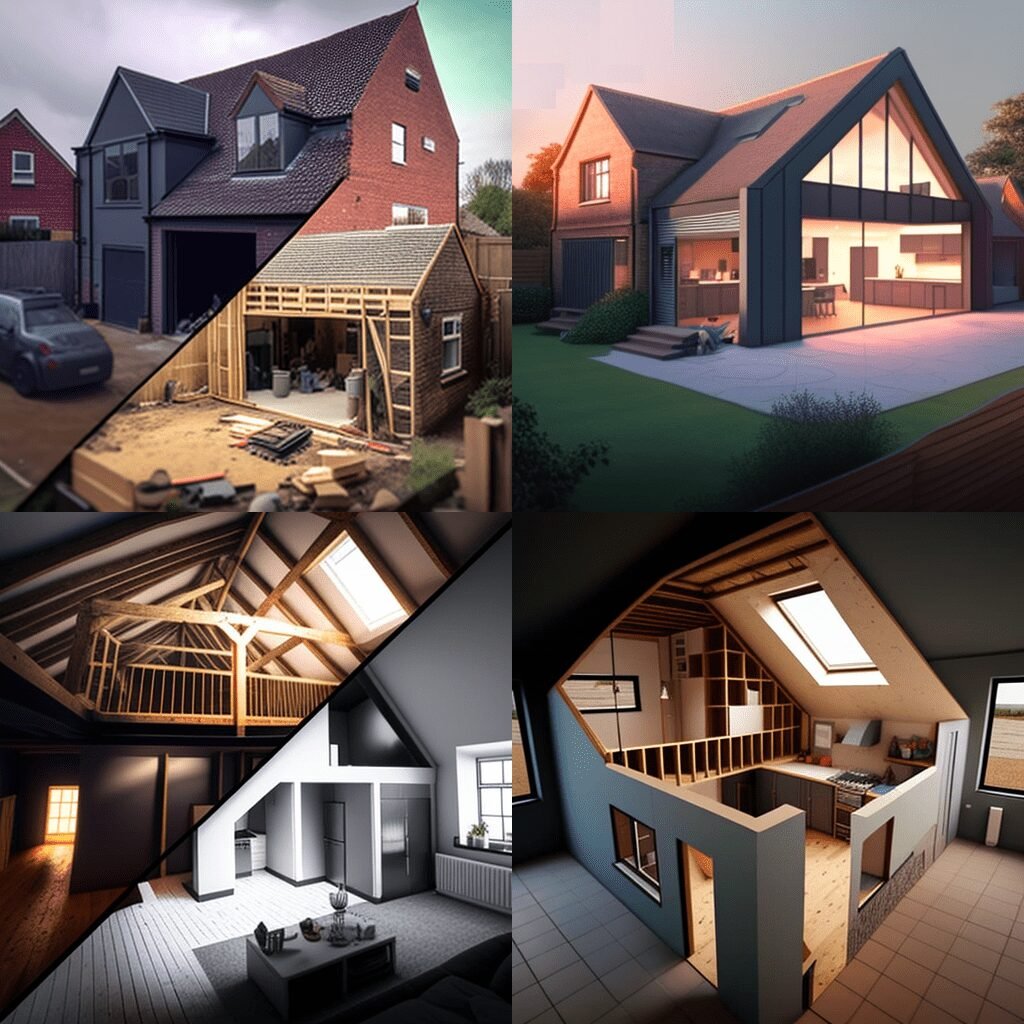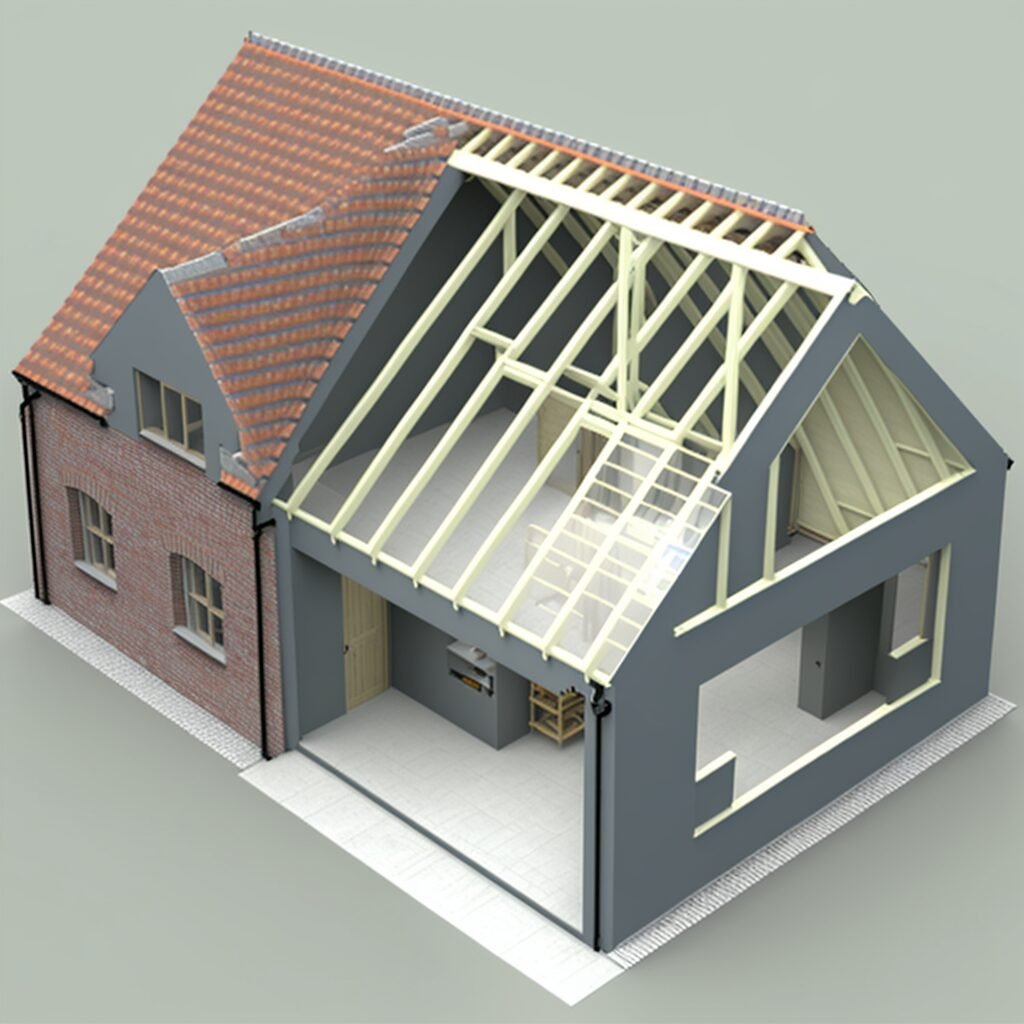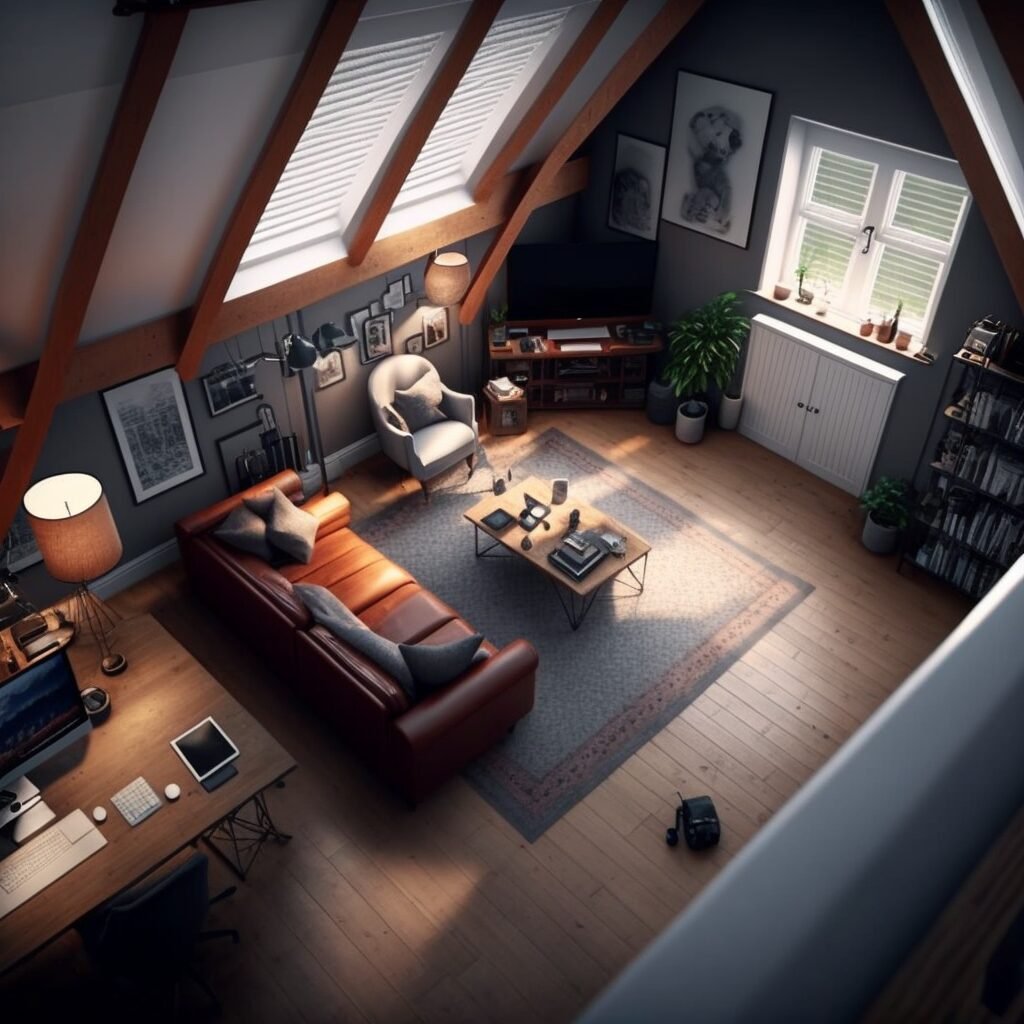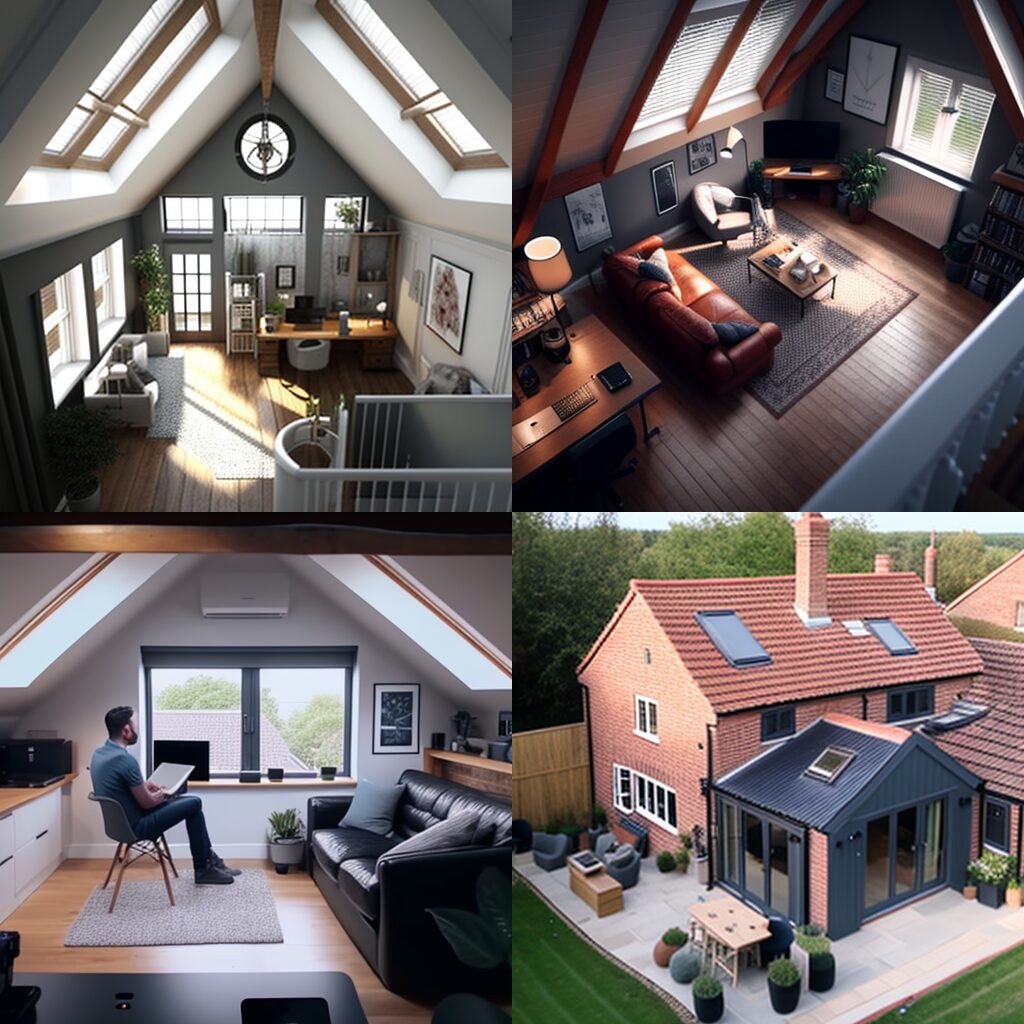The Complete Beginner's Guide to Loft Conversion Dormer
Facing a space shortage, particularly in high-demand city areas like London, it’s evident that UK homes are grappling with a significant challenge. The scarcity of new housing developments, combined with the burden of stamp duty that compels many to stay put, makes it increasingly difficult for growing families to find adequate room.
Given these circumstances, it comes as no surprise that loft conversions have experienced a remarkable surge in popularity in recent years. Rather than moving to a new location, homeowners are now opting to improve their existing dwellings, and one of the most favorable solutions is transforming the underutilized space in their loft, including loft conversion dormer.
If you’re considering a loft conversion dormer, you may have come across the term “dormer” in discussions. But what exactly is a dormer loft conversion, and more importantly, is it a suitable option for your home? To shed light on these questions, we consulted our team of experts, who will provide all the necessary information.
Understanding Dormer Loft Conversions in the UK: Expanding Headroom and Floorspace


Curious about dormer loft conversions? A dormer loft conversion involves the addition of a box-shaped structure to an existing roof, resulting in walls that stand at a 90-degree angle to the floor. This clever construction not only increases the available headspace but also expands the floorspace, providing homeowners with valuable extra room. With loft conversion dormer ideas, you can explore various options to make the most of your space, including different types , such as gable roof, hipped roof, shed roof, flat roof, and dog-house dormer. By considering the roof slopes and dimensions of your existing roof, you can determine the most suitable type of loft conversion dormer for your home. The size of the dormer can be customized according to your needs, with cubic meters of additional space created. To ensure accessibility, a well-designed staircase can be incorporated into the conversion, allowing easy movement between floors. In terms of functionality, fittings such as plumbing and electrical work can be installed to accommodate your specific requirements. Discover how dormer loft conversions can transform your living space by maximizing both comfort and functionality while making efficient use of your existing roof and available space.
Exploring Different Types of Dormer loft Conversions for Enhanced Space


When it comes to dormer conversions, there are several main types to consider. Each type offers unique characteristics and benefits to maximize the available space in your home. Let’s delve into the different dormer types, including loft conversion dormer:
Gable Fronted or Doghouse Dormer:
These dormers have a pitched roof that slopes on two sides, resembling a traditional doghouse. They create a triangular shape below the roofline. To enhance visual appeal and increase natural light, smaller single gables are incorporated, while larger ones provide more room. Opting for a loft conversion dormer in this design is an ideal way to make the most of available space.
Hip Roof : Enhancing Your Loft Conversion with Dormers
Hip roof dormers, much like gable-fronted ones, feature three sloping sides instead of two. This particular design provides an increased amount of horizontal space in comparison to gable dormers and also offers more headspace than shed dormers.
Shed Dormer:
With a roof that slopes in the same direction as the main roof but at a shallower pitch, shed dormers are a cost-effective option. They lack a peak or hip, making them ideal for creating extra space, often resulting in large loft conversion dormer installations.
Flat Roof: Incorporating Loft Conversion Dormer for Expanded Living Areas
Characterized by a box-shaped design and a flat roof, these dormers are commonly built at the back of a property. The flat-roof provides generous interior space, with all walls being vertical. However, their visual appeal can occasionally appear slightly mismatched, resembling an attached box. It is worth considering the incorporation of this dormer type for expanding your available space in a loft conversion.
Mansard Dormer: Creating a Stylish and Functional Loft Space with a Dormer Conversion
Mansard dormers, which take inspiration from the renowned French architect Francois Mansard, are commonly built at the rear of a property. These dormers have a central flat roof and sides that are tilted at approximately 70 degrees. By utilizing these extensions in loft conversion dormers, one can substantially increase their living space.
L-Shaped Dormer:
This type involves the construction of two separate dormers—one positioned above the main roof of the house and another situated over a rear extension. These two dormers come together to create an L shape. L-shaped dormers are especially favored by owners of Victorian terraced properties
By understanding the various types of loft conversion, you can make an informed decision on the most suitable option to optimize your living-space and meet your specific needs. Prior to starting any dormer conversion project, it’s important to consider factors such as planning permission, party wall agreements (if applicable), and the specific requirements of your property, whether it’s a maisonette or a house with a sloping roof.
Factors to Consider for Loft Conversion Suitability: How to Determine if Your Space is Ideal for Conversion?


Before considering a loft conversion, it is vital to assess the suitability of your home for such a transformation. Various factors need to be taken into account, including available head height, roof pitch, structural considerations, and the presence of obstacles like chimneys or water tanks. To obtain an accurate evaluation of your loft space, it is advisable to seek the expertise of a qualified building professional who can visit your house and conduct a comprehensive inspection.
Ensuring adherence to building regulations is of utmost importance when undertaking a loft conversion project. Typically, a minimum ceiling height of 2.2 meters is mandatory, and this can be measured using a tape measure by determining the distance from the floor to the highest point within the roof space. It is worth noting that homes with low-pitched roofs may present difficulties for a successful loft conversion, as even the addition of a large flat-roof dormer may not sufficiently address the issue of limited head room. Seeking advice from a building professional or contacting your local authority will enable you to obtain an accurate assessment of your loft-space.
If the height of the roof space is inadequate, there are two solutions available that may prove costly. The first option is to raise the roof, which is feasible from a structural standpoint. It’s important to note, however, that pursuing this approach can come with significant expenses and obtaining planning permission could be challenging, particularly for semi-detached or terraced homes. The second solution involves reducing the ceiling heights in the rooms below to gain more head room. Before taking any action, carefully evaluate whether the additional space gained in the loft justifies the compromise of lower ceilings in the rooms below.
It is imperative to determine the roof structure of your house. Knowing your house’s roof structure is crucial for homeowners. By checking the interior through the loft hatch, you can identify whether it has rafters or trusses, depending on its age. Traditional rafters were used in older constructions, located along the roof’s edge and leaving the triangular space below mostly unused. However, since the 1960s, truss frame roofs have become more common, featuring W-shaped trusses that occupy a significant portion of the loft.
If you’re thinking of converting a loft that has trusses, it is possible, but it would need extra structural reinforcement before the trusses can be removed. It’s crucial to consult a structural engineer before proceeding with any alterations. There are feasible alternatives, including using robust steel beams or investigating inventive solutions such as “Telebeams,” which are lightweight aluminum beams that can be extended according to your requirements. These options can guarantee the stability and safety of your loft conversion venture.
By carefully considering these factors and seeking professional guidance, you can determine the suitability of your home for a loft conversion and embark on a successful project.
Exploring the Pros & Cons of Dormer Loft Conversions with Loft Conversions Dormer


Considering a dormer loft conversion? It’s important to weigh the advantages and disadvantages before making a decision. Let’s delve into the pros and cons:
Pros of Dormer Loft Conversions:
Increased Headroom and Floorspace: Dormers offer a remarkable solution for increasing both head-room and floorspace in your home. These architectural additions are designed to maximize the usable area, providing valuable room for various purposes. For instance, a flat roof dormer has the potential to create additional floor space or even a luxurious master bedroom suite complete with a dedicated study or cozy sitting area.
Enhanced Natural Light: Dormers offer a remarkable benefit of allowing ample light to enter converted attics. Unlike Velux or roof windows, dormers possess vertical walls that permit the installation of regular windows. Consequently, the attic is illuminated with an amplified amount of light, resulting in a luminous and welcoming area.
Scenic Views: Dormer windows present a unique chance to relish an alternative outdoor scenery and enhance the visual appeal of your residence. Specifically, back dormers have the capability to house full-length picture windows and balconies, imparting a sense of opulence while offering an extended and stunning view.
Architectural Appeal: By incorporating one or two carefully crafted dormer windows, the outward look of a property can be greatly improved, increasing its architectural allure and enhancing its overall curb appeal.
Interior Aesthetics: Dormers not only add to the external aesthetics of a house but also increase its interior value. The recessed area beneath a dormer window can be utilized as a cozy spot for seating by the window or as a practical workspace that benefits from extra light.
Improved Ventilation: Rooftop windows in dormers promote better airflow and ventilation throughout the house, preventing upper floors from feeling stuffy.
Emergency Fire Escape: The significance of a dormer window lies in its ability to serve as a safe and reliable emergency fire exit, providing a secure passage from the attic to the roof.
Versatility: Dormers come in various styles, allowing for customization to suit different architectural preferences.
Cons of Dormer Loft Conversions: Factors to Consider for Loft Conversions with Dormers
Structural Considerations: Dormer loft conversions entail modifications to the roof, requiring consultation with a structural engineer or a qualified building expert to ensure meticulous design and construction. Inadequate implementation of dormer installations has the potential to diminish the value of your residence.
Increased Labor Intensity: Building dormers requires additional materials & time compared to simple rooflight attic conversions. Skilled work is involved in the installation process, contributing to the overall labor-intensive nature of dormer conversions.
Planning Permission Requirements: While rear dormers may be built under permitted development rights (PDRs) without requiring permission, front dormers typically necessitate obtaining permission. It’s crucial to be aware of local regulations and seek appropriate permissions when necessary.
Additional Cost: Compared to basic rooflight attic conversions, dormer conversions generally come with a higher price tag. This is because the construction process is more complex as it entails altering the roof structure of the property. The expenses can fluctuate depending on factors such as the size and type of dormer preferred.
By carefully evaluating these pros and cons, you can make an informed decision about whether a dormer loft conversion aligns with your needs, preferences, and budget. Consulting professionals in the field will provide valuable guidance throughout the process.
Understanding Planning Permission for Dormer Additions


Are you uncertain whether adding a dormer requires planning permission? Discover the regulations and guidelines surrounding dormer loft conversions to determine if your project necessitates permission. One notable advantage of incorporating a dormer is that it often falls within your Permitted Development Rights (PDRs). These rights grant you the ability to extend your home without seeking permission, as long as your proposed addition adheres with specific guidelines.
However, it’s important to note that there are certain cases where PDRs may not apply. For instance, if your property is situated in a listed building or a conservation area, you would typically be exempt from PDRs and need planning permission. Moreover, specific limitations come into effect, such as:
Size Restrictions: For terrace houses, it is recommended that the dormers do not exceed 40 meters. However, in the case of semi-detached or detached homes, the limit can be extended up to 50 meters.
Height Considerations: Maintaining the original roof height is crucial when constructing a dormer.
Balcony Limitations: Dormers with balconies may not qualify for PDRs, although Juliet balconies are generally acceptable.
Consistent Materials: It is crucial to ensure that the materials used for your dormer blend harmoniously with the overall character and appearance of your home.
Neighbour Impact: Your dormer should not negatively affect your neighbors by causing issues like overlooking or overshadowing.
Protected Species: If bats inhabit your loft, as they are a protected species, obtaining a special license is necessary before disturbing their habitat.
In case your project satisfies the criteria of permissible development, it is advisable to seek a Lawful Development Certificate. This certificate functions as a safeguard against probable legal complications and serves as proof to potential buyers that your design complies with superior standards.
By understanding the intricacies of planning-permission and adhering to the guidelines, you can confidently proceed with your dormer addition, creating additional space and value for your home.
Dormers and Building Regulations: Ensuring Compliance and Safety


While you may not require permission for your dormer addition, it’s important to remember that building-regulations cannot be overlooked. They play a crucial role in any loft conversion project, including those involving dormer additions. One important aspect to consider is the party-wall.
A party wall is a shared wall or structure that separates two adjoining properties. When undertaking a dormer loft conversion, it’s essential to determine whether the construction will affect the party-wall. The Party Wall Act 1996 in the UK outlines the rights and responsibilities of property owners when carrying out work that may impact party walls. It’s important to notify your neighbors and follow the necessary procedures to adhering to regulations related to party-walls.
In addition to party-wall considerations, obtaining building control approval is also essential. Dedication of both time and financial resources is necessary to ensure compliance with these regulations. In order to prove the safety of your forthcoming living-space, it is necessary to seek the assistance of a range of experts, including an architect, structural engineer, and surveyor. These professionals will aid you in addressing crucial factors mandated by building- regulations, such as:
Headroom: Ensuring adequate head room clearance in the converted space is essential for comfort and safety.
Insulation: Meeting insulation standards to enhance energy efficiency and maintain a comfortable indoor environment.
Fire Safety: Implementing measures to enhance fire safety, including fire-resistant materials, escape routes, and smoke alarms.
Electricals: Ensuring proper electrical installations, adhering to safety regulations and electrical codes.
Stair Design: Designing and constructing stairs that meet safety standards and provide secure access to the converted area.
Soundproofing: Incorporating soundproofing measures to minimize noise transmission between the converted space and the rest of the house.
These are just a few examples of the many considerations involved in complying with building-regulations. Detailed drawings and plans will need to cover these aspects and more to demonstrate your adherence to safety and quality standards.
By engaging professionals and ensuring compliance with building regulations, you can have peace of mind knowing that your dormer conversion will create a safe and habitable space. Taking these steps is essential to protect both the structural integrity of your home and the well-being of its occupants.
Get in touch with us for your upcoming project!
Are you eager to begin your next project? Look no further than SECalcs! Our team of skilled engineers is committed to delivering top-notch services, including design and analysis, site inspections, and project management. We recognize the individuality of each project, which is why we devote our attention to understanding your specific requirements and offering tailor-made solutions. Reach out to us today to discuss your project needs and receive a personalized quote. Allow us to assist you in transforming your vision into a tangible reality!
- Sunday: Closed
- Monday - Thursday: 9AM - 7PM
- Friday: 9AM - 5PM



- Head Office: Corwell Lane, Uxbridge, England, UB8 3DE.
- + (44) 07359 267907
- info@structuralengineercalcs.com


